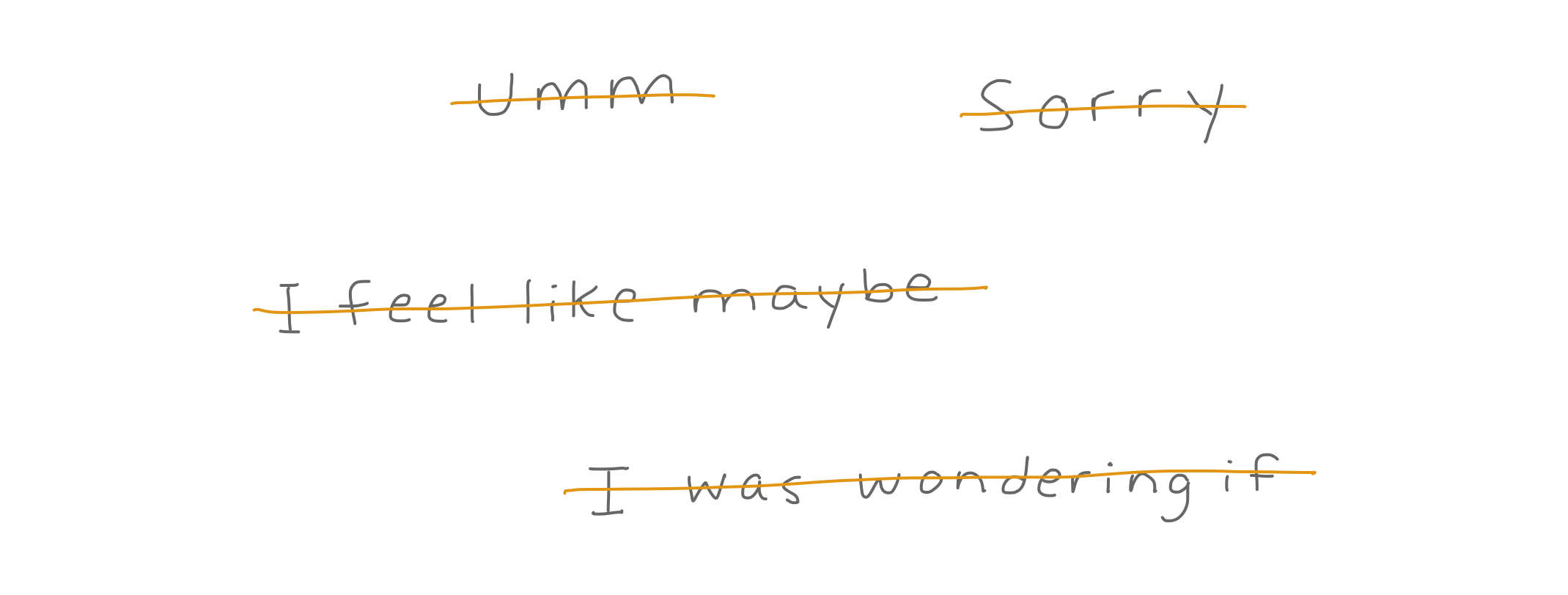
Present without apologies
Most people struggle with confidence at times, especially in the workplace and I’m no exception. I often find myself presenting my design work and my opinions with a variety of qualifiers, as if pointing out my perceived flaws before someone else can will negate them. This is just as much a reminder to myself as it is to anyone else, but please, present your work without apologies.
Here are a bunch of unnecessary qualifiers and why they’re unnecessary. When I find myself typing one of these, I take a step back, read over what I was trying to say, and rewrite…
Don’t say these things:
IMO (in my opinion)
Obviously it’s your opinion, you are saying it. If it’s not your opinion then it’d be appropiate to mention whose opinion it actually is.
IMHO (in my humble opinion)
This sounds particularly apologetic, don’t do it. And by the way, calling yourself humble is not humble.
“Not to be that person, but…”
Nobody thinks you’re that person, maybe you think you’re that person. If you’re about to be a troll, then maybe you are that person… no, you’re not a troll, you’re not that person.
“Hmmmmmm.”
You don’t have to feign a thought bubble via text. Wait until you’re done thinking and then write down whatever it is you wanted to say. Don’t pretend to fumble on an idea.
“I feel like maybe…”
This feeble attempt at feedback is lame, also, it doesn’t make sense grammatically and reads like a word search.
“Not to be pedantic but…”
Nobody thinks you’re pedantic.
“I was wondering if…”
Just say what you were wondering about instead of saying you were wondering.
“Just did this little thing, it’s no big deal.”
Don’t sell yourself short.
“Sorry.”
No no no no no. Don’t say this (unless you legitimately did something horrible, but asking someone a question is not something horrible).
Wait, so what do I say? 😳
At first it can be intimidating to present ideas without a veil of apology, but it’s an important step in building your confidence.
One of the nice things about our asynchronous work style at Basecamp (where I work as a designer on our iOS team), is that I naturally write more instead of saying things out loud. This forces me to review each and every word I say. If I’m giving feedback on a design, it is in the written form. If I’m presenting an idea for a feature, it is in the written form. This has forced me to curtail my excessive usage of fluffy words like “like” and “umm,” things I had been saying habitually and subconsciously for years.
When writing, I like to use an emoji or two to communicate that I’m not angry or upset about something. It can be easy for someone to read something as terse and critical when it’s just a sentence or two, but that doesn’t mean you have to apologize. If you’re worried about “seeming mean” (one of my primary sources of anxiety) try writing down the confident version of your thought and then maybe add an emoji after. For example, when giving feedback on a design, you might say: “This feels noisy and could benefit from a few refinements, what if we get rid of the meta data on this screen? 🤔” ← that little guy lets them know you’re simply thinking, not being a big scary grim reaper with a critical axe in your hand. Or “Definitely didn’t mean for this to be the final copy! 😬” when you’re worried about seeming defensive but simply want to mention your intentions.
What I’ve learned through my angst and real life is experience, is that people almost never think you’re mean, or arrogant, or overly confident. They are usually happy to get your opinion, and having honest dialogue (especially around design critique) is essential to healthy collaboration. So please, ditch the qualifiers.

